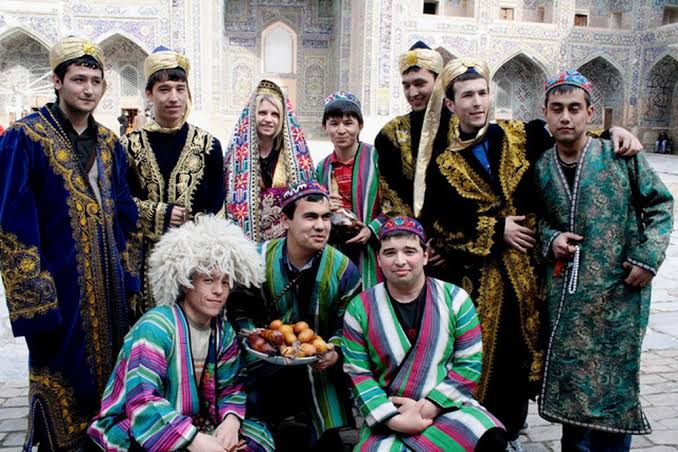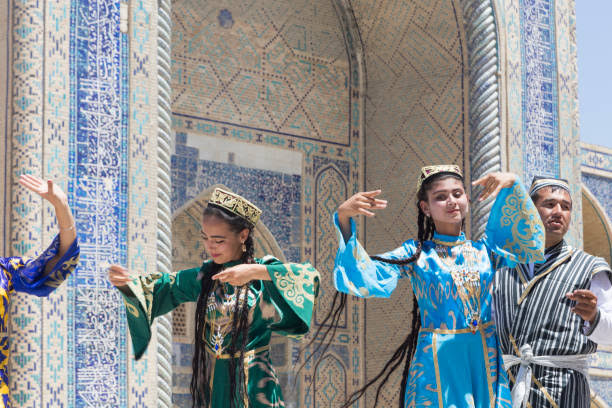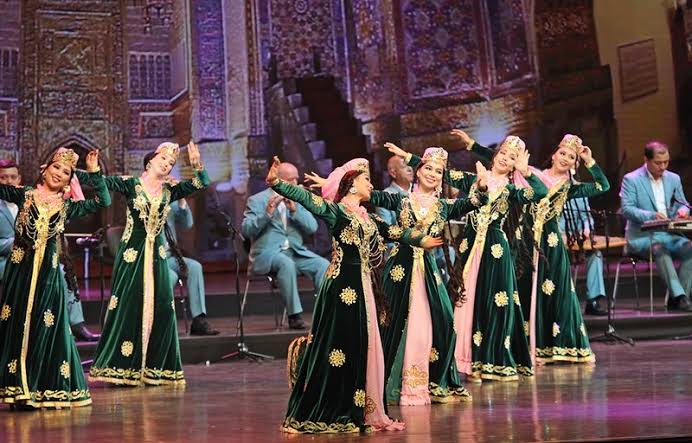Dynamic culture of Uzbekistan
The culture of Uzbekistan is rich in very different cultural heritages because of its strategic location and noteworthy history which has been coming through various civilizations.
Historical Perspective
A wide mix of different ethnic groups and cultures along with sequential numerous conquests of ancient Persians, Greeks, Chinese, Arabs, nomadic Turkic tribes, Mongols, later, Russians in various periods of Uzbekistan history have considerably contributed Uzbek culture and lifestyle. That’s why it is very colorful and considered not only a cradle of the culture in Central Asia but also of the East.

Additionally, in the development and prosperity of Uzbek culture, the Great Silk Road has also played an important role. Being on the crossroads of the Great Silk Road has created favorable conditions to trade goods and at the same time exchange languages, customs and traditions, religions, ideas, and cultures of different nations for a long period in the present-day territory of Uzbekistan.
The culture of Uzbekistan can also be reflected in traditions, dance, music, songs, clothes, entertainment, and some other aspects as the cultural elements.
But, due to the peculiar cultural characteristics of each region of Uzbekistan which are obviously demonstrated in dialects, national clothes, and dresses, it is impossible to experience the whole Uzbek culture at a time.
The most efficient way of getting acquainted with the culture of Uzbekistan widely is to participate in particular festivals in Uzbekistan. It is a good choice to witness and compare the cultural representatives of all regions in one place through their local songs and dances, national dresses, folk arts, and crafts in Uzbekistan.
Uzbek hospitality is an inseparable part of Uzbek culture. Throughout history, Uzbekistan was located in the heart of Silk Road. It used to host numerous passing by caravans. Thus, hospitality has become nature for the Uzbek nation! You can knock any door; a dweller opens immediately with a warm smile and invites you for a cup of tea in the house not knowing you and even without asking your aim of a visit. Hospitality in Uzbekistan is the honor of Uzbek people and the main quality of the culture of Uzbekistan!
Oriental Uzbek bazaars are one of the best and suitable places to observe Uzbek culture more vividly!

Do you know what name else Sunday has? Believe us; almost all Turkic nations know it. Sunday means “shopping day” or “bazaar day”. Monday is also described as “the next day after Bazaar”.
Although it is already the 21st century, bazaars are still an essential part of Uzbek culture and Central Asian people’s lifestyle. And it has not changed significantly from its form of medieval ages.People cannot imagine the East without its bazaars! The role of oriental bazaars in local people’s life is vital!
It is not only a place of shopping but also a center of communication, an exchange of news, emotions, and experiences, and even the relief of depressions! One can hear the latest unofficial news in the bazaar before it appears in Mass Media; if one is depressed, he or she can get rid of it by sharing with sellers.

Because sellers make compliments to buyers to attract while buyers make compliments to sellers to get the lowest prices!One of the main features of bazaars is bargaining! There is a saying: “A purchase without bargaining is not halal!” So, you can buy products even with discounted prices up to 40-50% by bargaining. This is a peculiarity of oriental bazaars which plays one of the main roles in the culture of Uzbekistan!
Each region of Uzbekistan has its own bazaars but we suggest visiting the following ones:
- Chorsu bazaar in Tashkent
- Oloy (Alay) bazaar in Tashkent
- Siyab (Siyab) bazaar in Samarkand
- Urgut bazaar of handicrafts in Samarkand region.
Music in the culture of Uzbekistan
Traditional Uzbek music is one of the means of understanding the peculiarity of the Uzbek nation. Because music and a song express a nation’s dreams, wishes, nature, mood, and intentions.
As an example, we can mention the song “Sust Khotin” which has been sung throughout history to call rain during a drought period or a song “Oblo baraka” which has been sung by men in summer and autumn asking for a good harvest.
We can witness the deep history of traditional Uzbek music by seeing images of musicians, relating to the culture of the Kushan period, depicted on the frieze with a stringed instrument in the form of a harp in his hand, the other with a wind instrument similar to a flute, and the third with an oblong double-sided drum.

From this, we can conclude that the Kushans and Sogdians knew the main types of instruments and used them both solo and in an ensemble.Due to the numerous types of musical instruments, Uzbek national music is one of the most colorful not only among Central Asian countries but also in the whole world.
Here are some main Uzbek musical instruments: Kayrok/Qayroq (stone castanets), doira/doyra (tambourine), Nay/Nai (flute), Rubab/Rubob (a lute-like instrument), Tanbur (a fretted string instrument), Dutor/Dutar (long-necked two-stringed lute), Sato (long-necked lute), Qobuz/Kobuz/Kobyz (Two-string fiddle), Karnai/Karnay (a long wind instrument), Surnai/Surnay (a wind instrument), Nogora/Nagara (drum with a rounded back and a hide head, usually played in pairs), Gijjaz/Ghijak (a group of related spike fiddles).

Many genres of traditional music have been formed and developed over the centuries. Traditional Uzbek music and songs have been accompanying all significant events in the life of the people for centuries.
Uzbek folklore includes family rituals, labor, lullabies, holiday, and other songs. For example, at weddings they perform “Yor-Yor”, “Ulan”, “Kelin Salom”, etc., at funerals – “Sadr” and “Yigi”, there are also labor songs such as “Maida” and “Yozi”, lullabies – “Alla”, songs performed during such holidays as Navruz (the day of the vernal equinox), etc.
Uzbekistan can boast with its following ancient genres passing from ancestors to generations: Shoshmaqom/Shashmaqam, Lapar (a dialogue song), Khalfa (Khorezmian genre), Katta ashula (two or more men sing by waving plates near their mount but without any other musical instruments), and Bakhshi genre (a folk narrator, creator, and promoters of epic traditions playing in single). UNESCO already included Shoshmaqom/Shashmaqam and Katta ashula into its Representative List of the Intangible Cultural Heritage of Humanity.

Soon Bakhshi genre is going to join the list.Music not only keeps up spirits but also symbolizes the friendship and unity of nations. Thus, the Uzbek government has been hosting a well-known international music festival “Sharq Taronalari” (Eastern melodies) in Registan Square of Samarkand every second year at the end of August since 1997.


